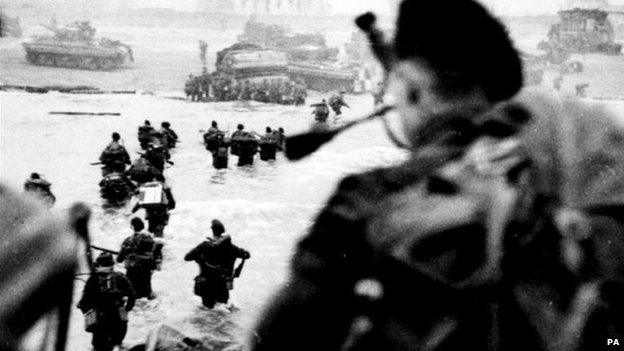Underwater project to map history of Valentine tanks
- Published
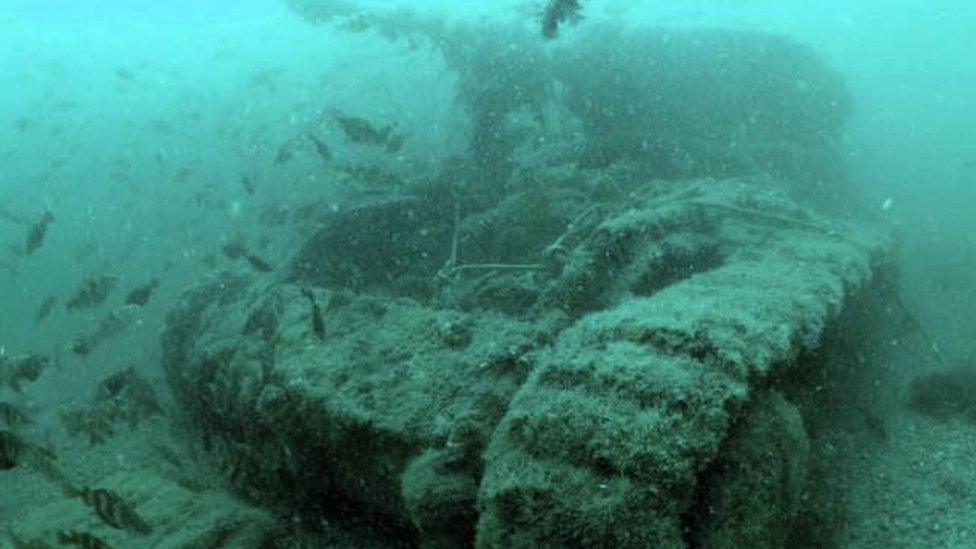
According to a diary that documented Exercise Smash the tanks sank during high winds and a strong sea
An underwater project has begun to map the history of the Valentine tanks that sunk off Dorset during D-Day training.
It is believed seven "floating" tanks sank in Studland Bay during Exercise Smash in April 1944, killing six men.
To mark the start of Isle of Purbeck Sub-Aqua Club's (IPSAC) Valentine 75 project, divers laid a wreath on one of the tanks earlier to commemorate the tragedy's 73rd anniversary.
The initiative is expected to culminate in an exhibition in 2019.

Valentine tanks had canvas screens around them
Six weeks before D-Day, troops gathered in Studland to rehearse the Normandy landings operation of World War Two - including the testing of the amphibious Valentine tanks.
"They had a canvas screen around the outside and used displacement to float, and their engines were connected to propellers," said David Willey, curator of Bovington's Tank Museum.
The tanks came from a need to provide cover for soldiers as they mounted their first attacks on enemy land, he added.
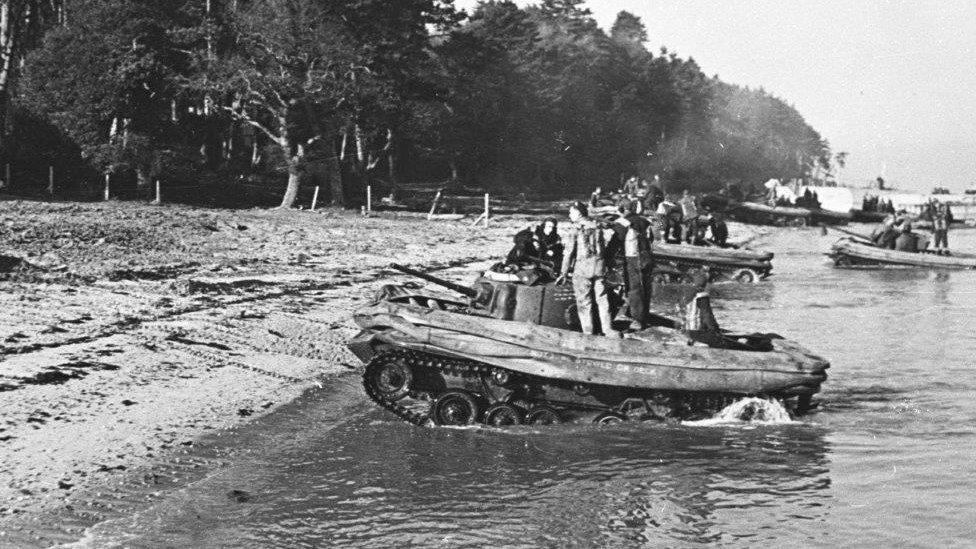
The amphibious tanks came from a need to provide cover for soldiers as they mounted their first attacks on enemy land
Although it is thought seven tanks lie in Studland Bay, only six are mentioned in a diary that documented the exercise.
Charles Robert Gould, Victor Hartley, Albert Victor Kirby, Arthur Jackson Park, Earnest Granville Petty and Victor Noel Townson, of the 4th/7th Royal Dragoon Guards, lost their lives.
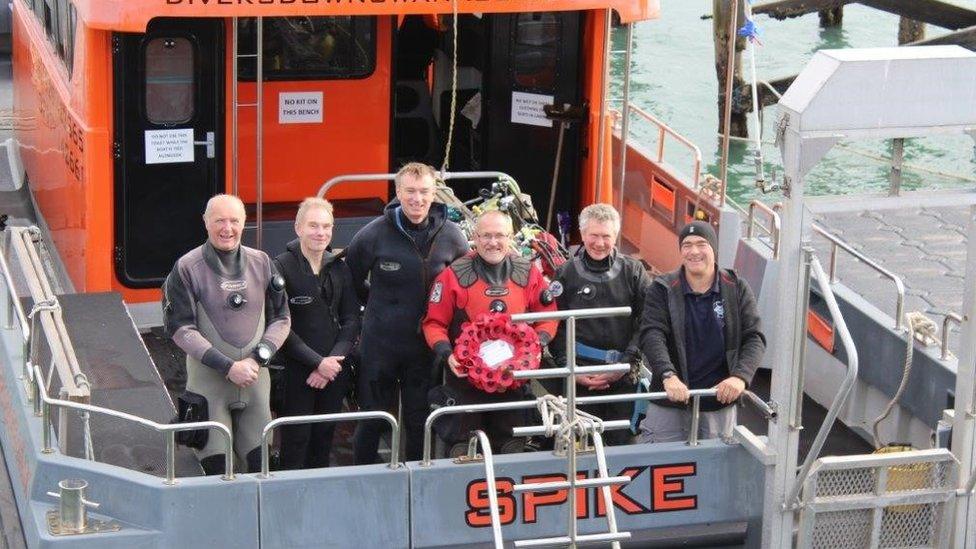
The start of the two-year project was marked with the laying of a commemorative wreath by Isle of Purbeck Sub-Aqua Club divers
Nick Reed, of IPSAC, said the Valentine 75 project aimed to "keep the memory of those who died alive" and "make people aware of their history and heritage".
He said the club aimed to carry out a survey of the condition of the tanks, as well as locate any pieces that may have been swept off by the sea.
It is hoped an exhibition of the findings will be held in 2019, possibly at Studland's Fort Henry.
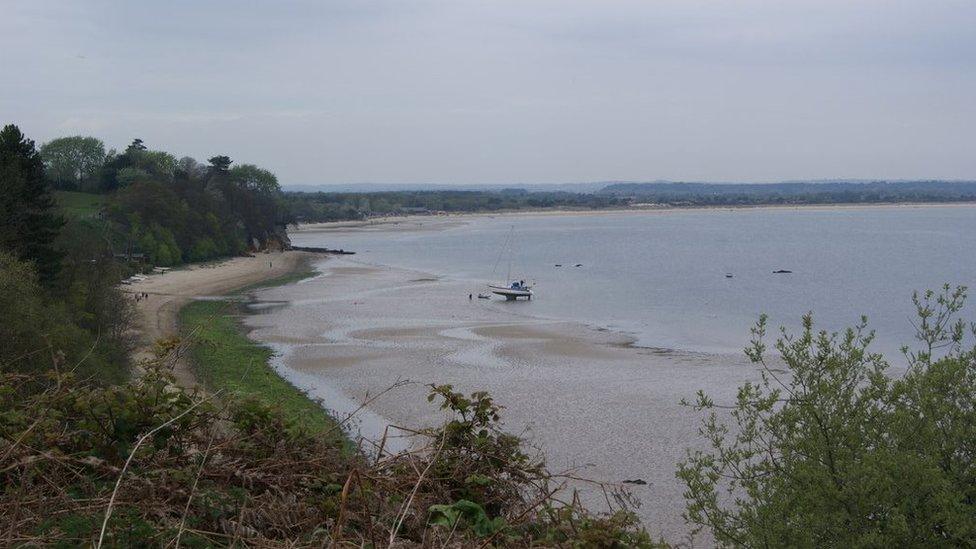
Studland was chosen for Exercise Smash because it resembles the coast of northern France where the D-Day landings took place, Tank Museum curator David Willey said

It is hoped an exhibition of the survey's findings will be held in 2019, possibly at Studland's Fort Henry
- Published5 June 2014
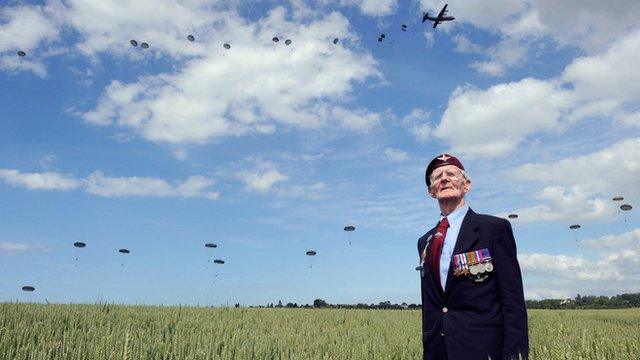
- Published3 May 2014
